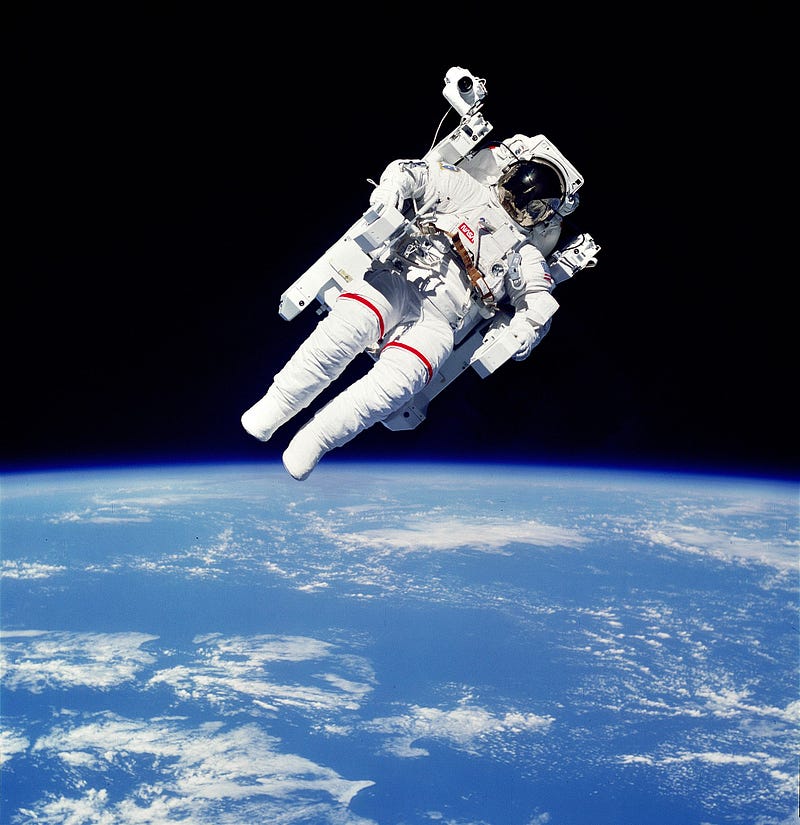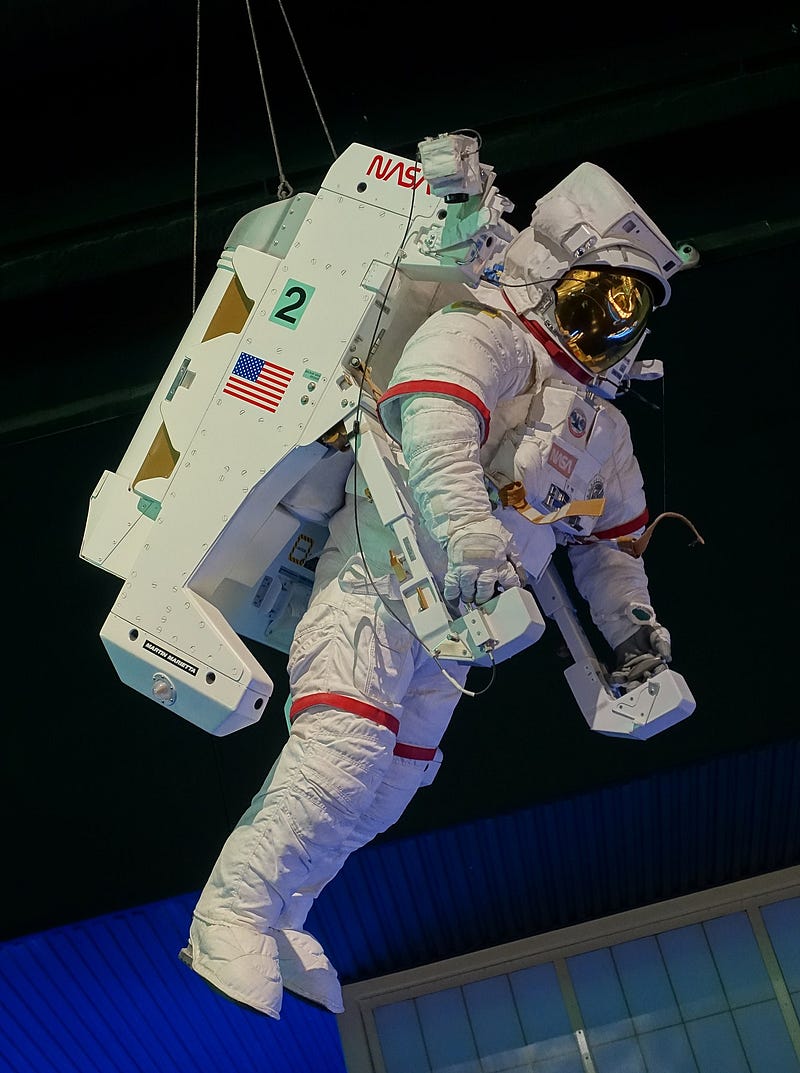Historic Spacewalks: The Pioneering Journeys Beyond Earth
Written on
Chapter 1: The First Untethered Spacewalk
On February 7, 1984, Bruce McCandless made history as the first astronaut to perform a spacewalk without being attached to his spacecraft. This momentous event took place during the Challenger mission and marked a significant advancement in human space exploration.

The following day, another crew member, Robert Stewart, also undertook a similar “unattached spacewalk,” gaining attention from the media. Prior to this, all Extra-Vehicular Activities (EVAs) required astronauts to be tethered to their spacecraft via a safety line. The introduction of the Manned Maneuvering Unit (MMU), a device weighing 148 kilograms on Earth, revolutionized the way astronauts operated outside their vessels.
Section 1.1: The Manned Maneuvering Unit Explained
The MMU was a sophisticated jetpack designed to enhance mobility in space. It consisted of dual tanks made from Kevlar-reinforced aluminum, containing 5.9 kilograms of nitrogen gas, which allowed for approximately six hours of operation. The unit featured twenty-four nozzles that could be controlled by the astronaut’s fingertips, enabling precise maneuvering. An automatic hold function allowed astronauts to use both hands for repairs or other tasks while in the vacuum of space.

Section 1.2: Preparing for a Spacewalk
Before stepping out into the vastness of space, the crew prepared meticulously. The day prior to the EVA, the cabin pressure was decreased, and oxygen levels were increased to eliminate nitrogen from the astronauts’ bloodstream. This precaution was vital as nitrogen could lead to severe health risks in low-pressure environments.
Bruce McCandless shared his experience: “I donned my cooling suit, followed by the spacesuit. Once I received the go-ahead, I entered the airlock, sealed the hatch, and opened it to step outside.”
Chapter 2: The Experience of Floating in Space
McCandless spent nearly four hours in space, traveling at a remarkable speed of 28,000 km/h, though he moved at a mere 31 cm/s relative to the shuttle. He remarked, “I wanted to echo Neil Armstrong’s famous words, so I said: ‘Maybe it was a small step for Neil, but for me, it’s a giant leap.’” This light-hearted comment helped alleviate some of the tension he felt.
Despite the extreme cold that made him shiver, the design of his jumpsuit allowed him to work efficiently, negating the need for additional cooling.

Section 2.1: The Legacy of the MMU
The MMU was developed by engineer Charles Whitsett, with whom McCandless collaborated since 1967. This partnership involved years of rigorous testing and development, culminating in the unit’s debut. Despite its success, the MMU had a short operational lifespan, with its final mission occurring during STS-51-A in November 1984, where astronauts Joseph P. Allen and Dale Gardner successfully captured two satellites.
After its retirement, the MMU became a relic of space history, displayed in museums, as the space shuttle’s advanced maneuverability rendered the jetpack obsolete.
Section 2.2: Understanding Space's Environment
The conditions in space are nearly a perfect vacuum. Without proper protection, astronauts would experience unconsciousness within ten seconds due to a lack of oxygen, with cerebral death occurring in just two minutes.
Explore the exhilarating experience of astronauts on a spacewalk in this official NASA broadcast featuring Steve Bowen and Woody Hoburg.
Discover the history behind the first spacewalk and the groundbreaking achievements of astronauts in this insightful video.